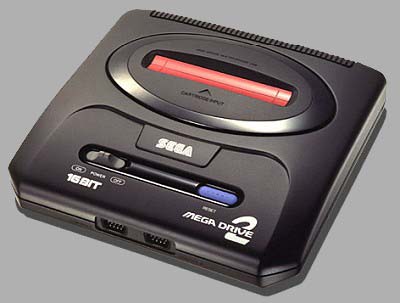Rosen's Photo-contacts brought him in touch with Pinball producers and he started to import them as well. This was a success and he bought the Jukebox builder: Service Games at the end of the 60s. He used an acronym as the new name: SeGa.
In the 70s and 80s Sega, bought by Gulf & Western, started in the coip-up market. The first hits were Frogger and Zaxxon. In Japan it entered the Homecomputer market with the SG1000 and SG3000. After the game crash of Atari and the void left behind, Sega entered the console market, following Nintendo and introduced the Mark III in 1985, better known as the Sega Master System.
Sega's heyday came in 1989 when the Megadrive was introduced with Sonic as its eyecather. It was one of the first 16-bit consoles. In America it is known as the Genesis. At the start of the 1990s Sega duelled with Nintendo for the top spot. It introduced the Game Gear as well, in essence a portable version of the Master System.
When the Megadrive became outdated in 1993/94 Sega tried to update it with the MegaCD (a CD-drive for the MegaDrive) and the 32x (een 32bits processor with 32.000 colors). Both were expensive and had but a small line of supporting games. When Sony introduced the Playstation it was all over.
Sega tried it in 1995 witht the Saturn and in 1998 with the Dreamcast. Technically, this were strong machines, but like Atari in the 1980s and Nintendo at this moment, it seemed impossible to recover a leading role. In 2001 Sega announced to concentrate on developing games and not longer to develop new Hardware.

